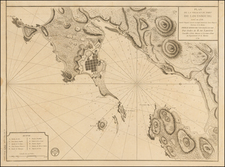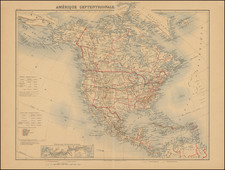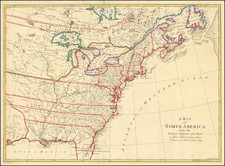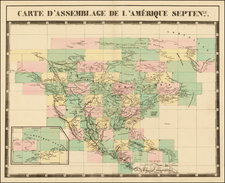Fine example of De Fer's scarce map of North America, first published in Paris in 1693.
Te map provides a fine elegant depiction of the prevailing cartographical knowledge of North America at the end of the 17th Century.
There is a precise depiction of the polar regions of Canada, a somewhat exaggerated by basically accurate depiction of the Great lake and St. Lawrence Region and classic straight line depiction of the Mississippi River, based upon the reports of French Jesuit missionaries and explorers in the second half of the 17th Century.
California is shown as an island on the Sanson model. The mouth of the Mississippi is pushed into Texas, a legacy of La Salle's early reports, and the Carolinas now appear on the map. One curious feature is the dpeiction of Mobile in the are ofmodern Tennessee.
In the norh, there is a vast region listed as "Cette Region est toue a suite Innonnue" (the whole of the region is unknown).
Nicholas de Fer (1646-1720) was the son of a map seller, Antoine de Fer, and grew to be one of the most well-known mapmakers in France in the seventeenth century. He was apprenticed at twelve years old to Louis Spirinx, an engraver. When his father died in 1673, Nicholas helped his mother run the business until 1687, when he became the sole proprietor.
His earliest known work is a map of the Canal of Languedoc in 1669, while some of his earliest engravings are in the revised edition of Methode pour Apprendre Facilement la Geographie (1685). In 1697, he published his first world atlas. Perhaps his most famous map is his wall map of America, published in 1698, with its celebrated beaver scene (engraved by Hendrick van Loon, designed by Nicolas Guerard). After his death in 1720, the business passed to his sons-in-law, Guillaume Danet and Jacques-Francois Benard.













![[Anchorage, Valdez and Prince William Sound] Cote Nord-Ouest De L'Amerique Reconnue par le Cape. Vancouver VIe. Partie . . .](https://storage.googleapis.com/raremaps/img/small/92676.jpg)
